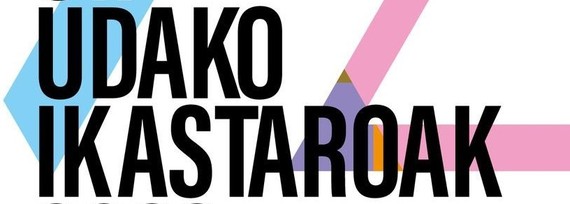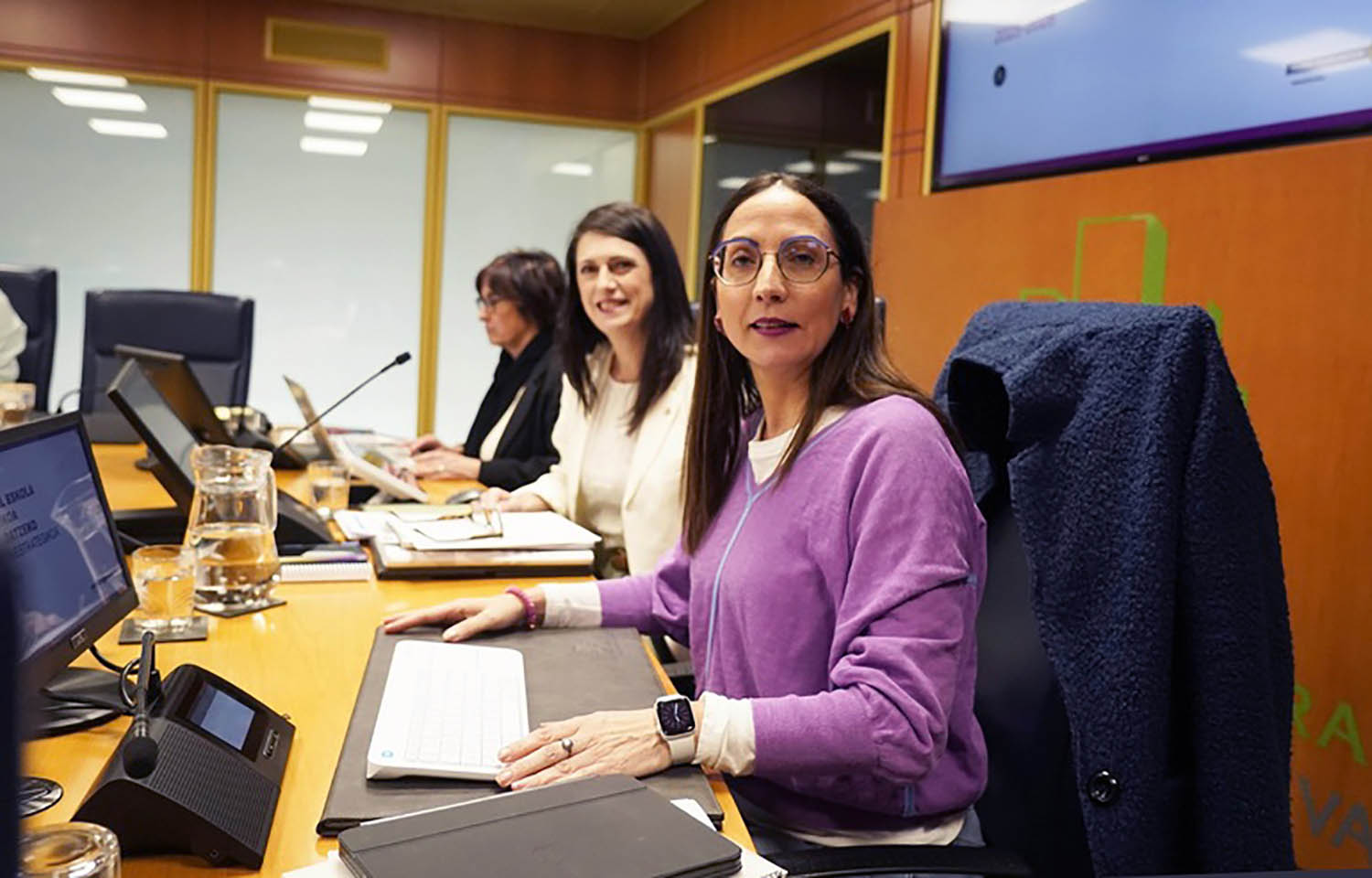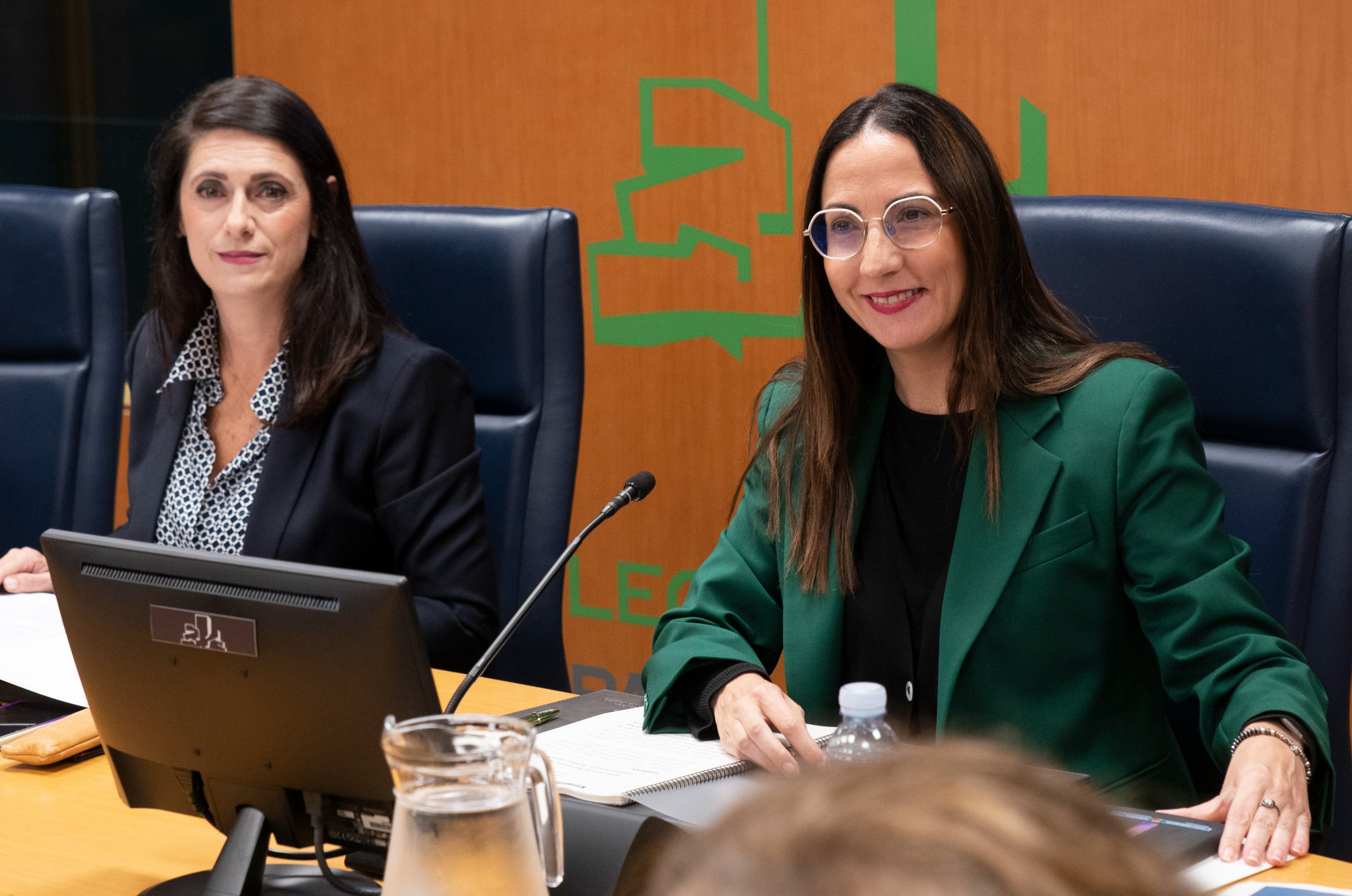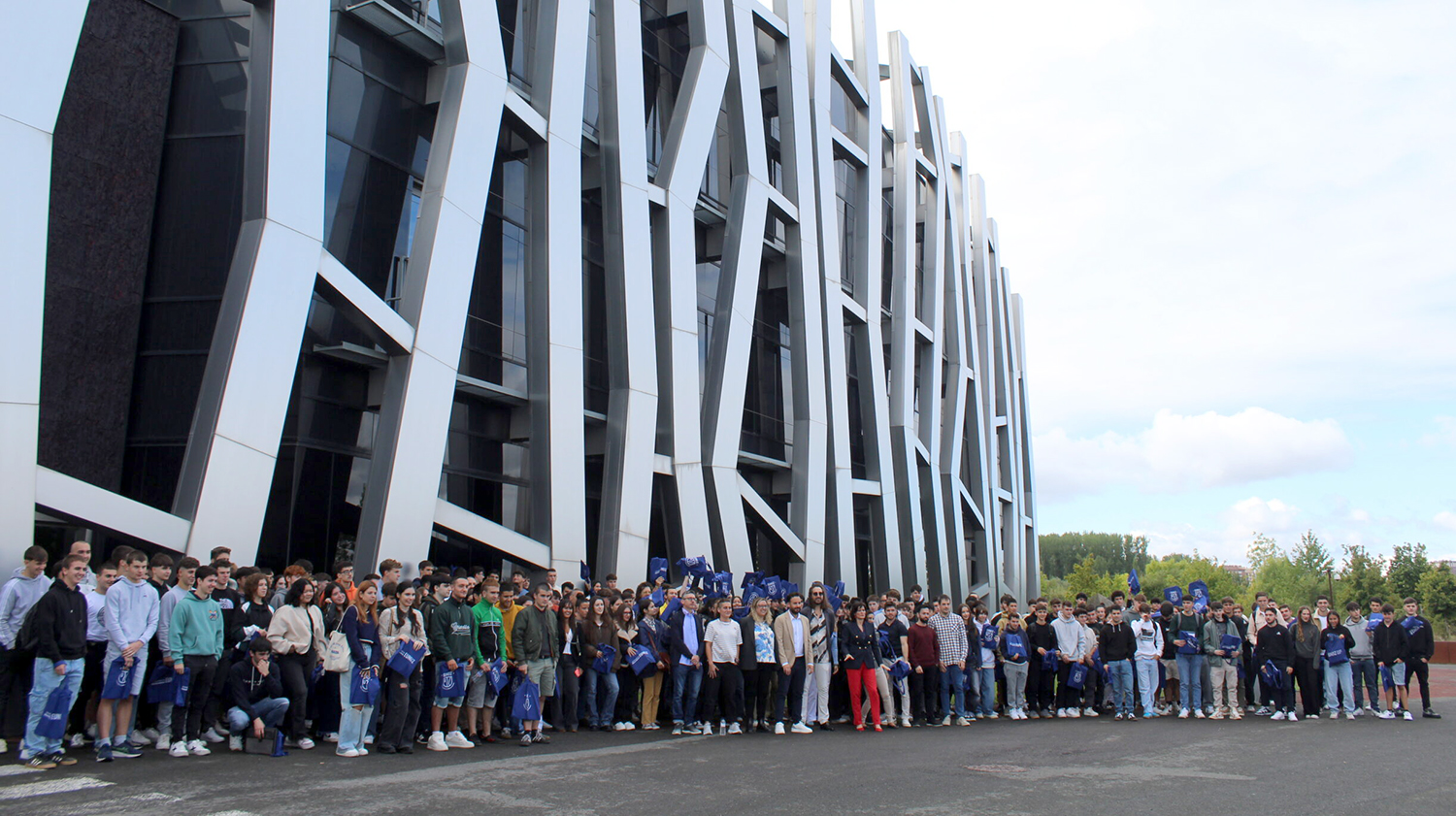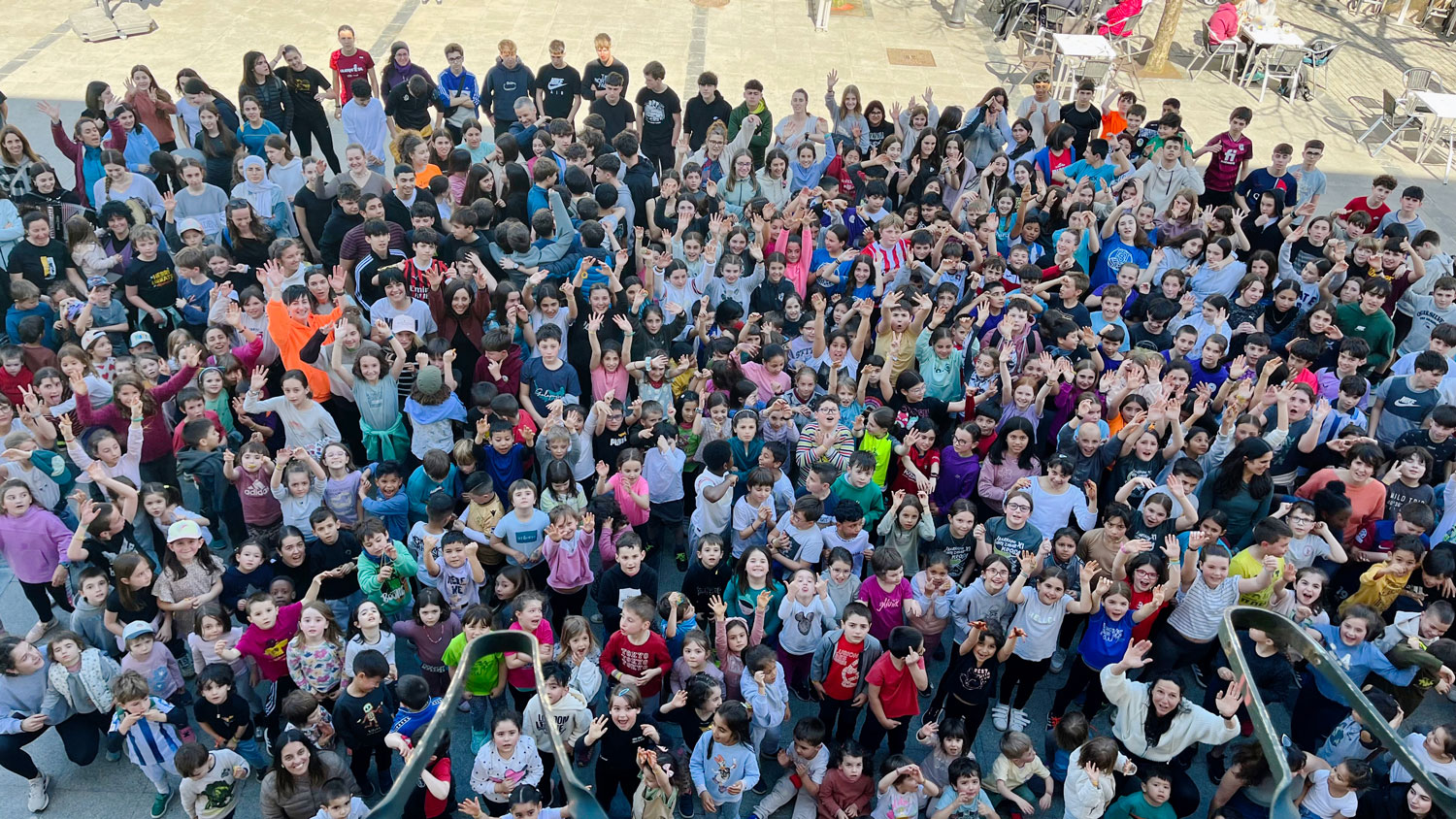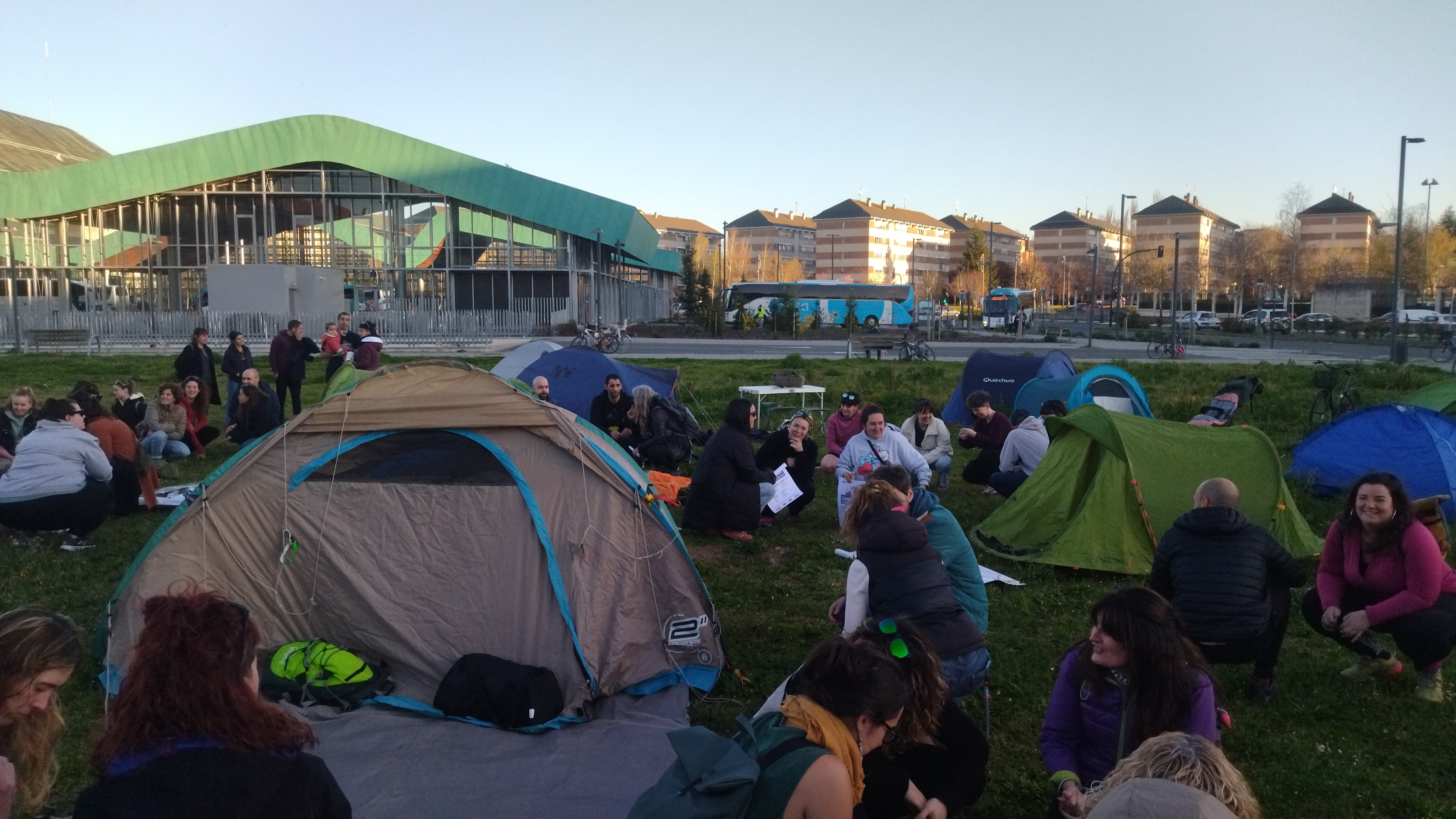Staircase that explores the toxic relationships of the couple
- In the Staircase of Gender Violence, we very quickly identify the slap or rape, but the control of the phone by the couple, the separation due to the partner's friends and hobbies, or the permanent abandonment of clothing and others, even logical in the name of love, seems acceptable to some adolescents. It is important to discuss with the students these first levels of the Escalator of Violence, because when they work it is usual that a partner appears chained on the ladder, surprise the boys with the fears expressed by the girls, carry in the victim the responsibility of not cutting the relationship or thinking that the others do not have to enter into couples' affairs, as we are told in Toki Alai College in Irun.
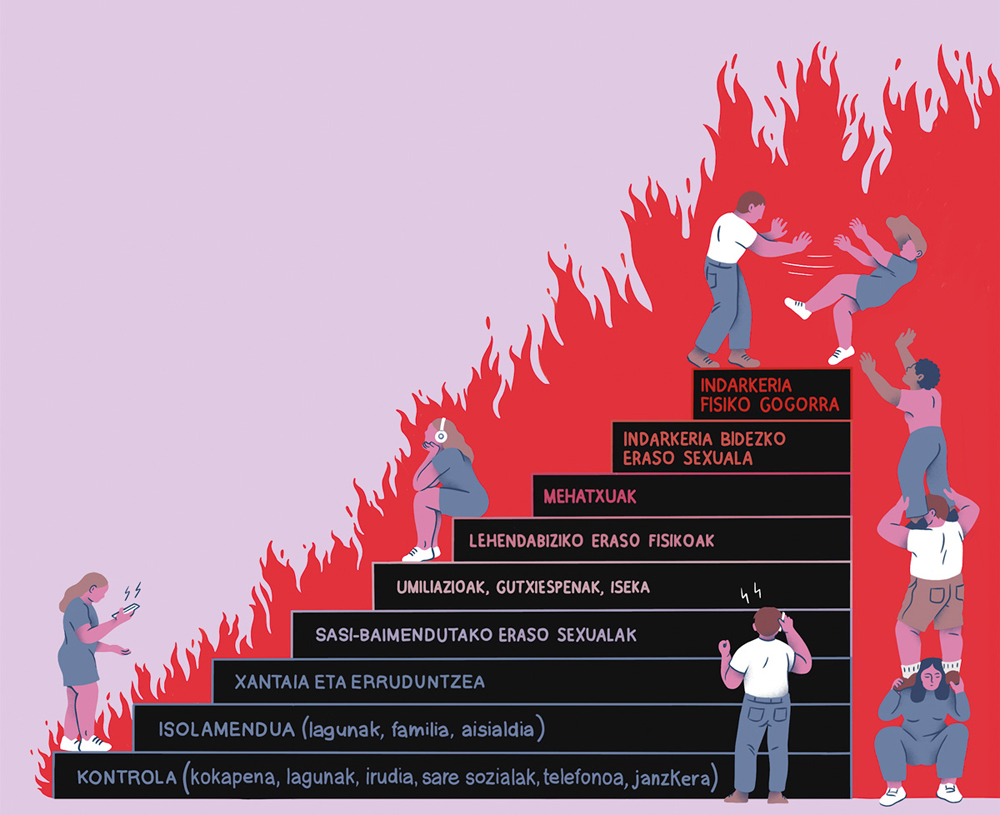
Sociologist Carmen Ruiz Repullo clearly explains in a video what the Staircase of Violence is, how the couple starts trying to know where and at all times what they are doing, until gradually they isolate and isolate that person from all the rest, conditioning their way of dressing and their behavior… until they take advantage to realize contempt, humiliation, threat, fear and even physical violence. All these steps prior to the onset of physical violence aim for the students to identify and become aware of the reality behind it in the public school Toki Alai. To do this, they work gradually and with an increasing level of depth in Compulsory Secondary Education, from the first (12-13 year old students) to the fourth year (15-16 years old).
The head of Co-education of the Center, Beatriz Rubio Perales, has clarified what reality is manifested in the students through the activity. It tells us about a very generalized trend: control by mobile, to the point of knowing the password of the couple's mobile, and jealousy in control. Girls value positively a point of control, taken from the myth of romantic love. They often associate with love “giving oneself completely”, that is, having to act with total transparency, without any secret. “Why does the couple have to know everything about you? Why can’t you have a field in your intimacy, the emotions and inner thinking that you want them to be for you?” The students are surprised, but the educator wants to tell them that there is no reason to undress completely because they are in a relationship with a partner, that that is also control, in some way.
Girls value positively a point of control, taken from the myth of romantic love. They often associate with love “giving up”, without any secret
What's the reaction of many kids? For denouncing that they also behave similarly in heterosexual relations with the girls, controlling them or moving them away from their friends. And that's right, but studies say the boy doesn't follow the ladder beyond the first steps, but he gets tired and cuts before he gets to the scarce steps of the ladder. So why do girls keep climbing? “Because what gender construction demands of one another is different, and girls have taught us to endure; and we have internalized the myth of romantic love as well, we think we will change the boy, that love will change our partner over time,” says Rubio. In short, these young people are the first couple relationships, and the model they have received is not repeating more than the attitudes they have learned. In the case of girls, the teacher is clear that at the starting point of many behaviors is the myth of romantic love; in the case of boys, the starting point is sex: the need to imagine an alpha male, give that look, repeat the model they receive through pornography and point out that they have control. “Imagine, in a class of sexuality, a boy asked the teacher if he was wrong that while he was practicing sex, he wouldn’t want to overwhelm his girlfriend.”
Boys report that girls behave similarly to them. And that's right, but studies say that the kid doesn't follow the ladder beyond the first steps, gets tired and cuts.
Frog metaphor in hot water What is the
reaction of many girls? For to recognize that in relationships it is always they who give in to different situations. And they're told that that's the Escalator of Violence, which we're always giving in. Another typical reaction among girls is to accuse the victim himself of why he doesn't cut the relationship, why he doesn't leave the ladder. “All right, he hasn’t left the relationship, but nobody has told him that he has to leave it and perhaps the one inside doesn’t see the situation as clear as those outside,” explains Rubio and tells them the frog metaphor. If you put the frog in a casserole with the boiling water, jump; if you put the frog in warm water and gradually warmer water, the frog won't notice and at the end it won't have the ability to pull it out; someone needs to put their hand and pull it out. And the rest of us have to be that hand, that help.”
A sign that the Staircase of Violence lives among today's young people, looks, gestures and gossip among the students who can be seen in class while talking about the subject. And not in front of everyone, but at the end of the class one or the other approaches the teacher, to say that normally the girl, a neighbor, not oneself, lives a similar case, that is controlled at all times, that has moved away from the crew. “It comes to us that it has problems in the crew, it traces a little, and then a relationship of toxic partner often appears.”
What would you do?
They raise different situations in class to analyze the role of people who are outside the toxic relationship of the couple. Friends are together and Iker tells his girlfriend that so dressed he does not go with him, his friend Laura has not come with you for a long time, he always makes excuses, with Irati you feel very uncomfortable, because he looks at the phone all the time, whatsapecon with him… What would you do? According to the professor, almost all students realize that what happens in these situations is not appropriate, but those who dare to intervene from there (to say something, to help) are very few. “What we often hear is ‘they’re not my stuff, how am I going to enter a relationship with a partner?’, and we try to make us understand that if we see something inadequate they can intervene to fight it, or if we don’t tell a trusted adult.”
The last step of the activity is to think about how a healthy couple relationship should be and characterize it constructively. Fairy, cheerful, not jealous and faithful are some of the features they list. “It is curious, they attach great importance to fidelity, they are very progressive for some things and very traditional for others,” said Beatriz Rubio.
Beatriz Rubio: “The girls say that when they come home at night they send a message to their friends, that going to a boy in front of a big crew is uncomfortable… and you hear many boys that all that is new to them”
The Co-Education Officer tells us that all the students have always worked on the subject together, but recently they have interspersed dynamics
for girls and boys to become separated. These workshops allow differentiated work and dialogue more deeply about different things; the driver who works with the boys is the man, the woman who meets with the girls: for example, they use these dynamics to work fraternity with the girls and to reflect with the boys on the model of masculinity.
However, Rubio believes that it is essential to reflect together and listen. For example, boys and girls do not always interpret the same situation in the same way, and interesting debates arise. In the video that you just saw, Ander has put Lorena’s hand under the t-shirt and the view of Ander (contented) and Lorena (uncomfortable) are opposing, “but he hasn’t told him not to do so,” says many boys, and the girls, internalizing the message that is being transmitted today, answer: “But he hasn’t even said yes, he hasn’t given him permission.”
In addition, he says that listening to the experiences and fears of the collateral one is clarifying. When girls talk about phrases they have to listen to in relation to gender, “if you continue like this you won’t throw guys”, “wear very little clothes on top”…, some guys are surprised, just like when they talk about fear. At these ages, the children's fears are mainly related to pain, accidents, death..., action and risk. Girls, on the other hand, are focused on physical image or gender violence: “When we come home at night, they send a message to their friends to tell them that they have come home, that they carry the keys in their hands on their way home, that going in front of a big group of kids is uncomfortable, why they fear to stay alone in the bar… and you hear many kids who didn’t know that they didn’t know all that, that they are new, so it’s important that the guys hear all this.
For the girls it is also a useful exercise because “by sharing them they see that they are not fools or weak because they feel these fears, that a structural problem has led us to feel like this: you are not intimidating, the boy is not more courageous than you, it is not for you, but for the reality that we have rooted in society”. Sharing this means empowering oneself, giving tools to understand situations, the teacher explains.
A Youtuber stream denies gender-based violence and students are repeating these discourses to school. In addition, because of the bubbling effect of the Internet, they interpret this vision as the main
How to work with the boys?The Escalator of
Violence aims to empower the girls and give them tools, but it is the responsibility of the boys not to provoke male violence and to work with them is essential. The head of Co-education says that there is a large group of boys who understand that the exposed situations are not normal, but some feel that they are attacked when dealing with the subject at school, they are tired of the discourse of the victim and the aggressor. “We have to work a lot with them, with new masculinities, with other models and possibilities… and we try to do it constructively, so that the message is not ‘this is because I am a boy’, but ‘what can I do as a boy so this does not happen’, but one thing is clear: male violence is man-made violence, and that message cannot be avoided.”
The key to Beatriz Rubio is the resume, so that from a young age they get used to working with texts that do not promote romantic love, or with exercises that do not reinforce stereotypes based on gender. He says that the spectacular activities are OK, “we need that March 8 storm day, but also the daily Sirimiri, so that it is not something I do from time to time, ‘it is already co-educating to give midwife’, but a vision that comes out in the day to day.” He tells us two examples: they have just produced a text on a Biscayan boy who does rhythmic gymnastics in the Basque Country, and for them it is not related to co-education, but has served to receive other references. The second example corresponds to the subject of History: “They study the Industrial Revolution and the First World War, but not the struggle of women to achieve the right to vote for a hundred years; to change it, together with the professor of history they have prepared materials and notes and have worked on suffrage.”
In addition, Rubio says she sees young teachers, now incorporated into the educational system, very clothed in feminism and who help her partner in school. Also among young male professors, those who distance themselves from hegemonic masculinity are numerous and these references are very positive for students.
We have
said that many boys tend to open their eyes, but there are others who do not want to see reality, and that resistance is increasing, becoming more frequent and more intense. “Facing in class is not a concern, sometimes the goal is the same, they are in adolescence, but on November 25 we were burned the hanging banner, the firefighters had to come and on March 8 we were burned and destroyed the photos we put with significant women. And so I think with the kids, we're not working well on the topic, we're not inventing it, and we have to do more and better. At the same time, I tell myself that it is also a sign that we are doing well from feminism; in short, the reality is that men have to make a process of powerlessness and many feel that their place is wandering, so they act like this.”
The head of Co-education has highlighted another strength factor of resistance. The new generations barely consume television, prefer Youtube, and there is a YouTuber stream that denies gender violence, which is a denier of gender violence. Well, students, especially kids, go to school looking at these YouTubers and repeating those speeches. They have done a practical example in class: On Beatriz Rubio’s computer they have introduced the words “gender violence” into Google’s search engine, and the same they have done on the student’s computer who has seen one of these youtubers. The contents that the search engine offers to each other are completely different: “The network feeds the same speech over and over again, because Google will show you four different content, and what students often interpret is that that approach is the main one. It’s important to provide tools to understand that the Internet can produce a bubble effect.”
Beatriz Rubio
believes that resistance, young generations, in general, are opening their eyes. “In the area of sexuality, for example, you see gestures, you perceive greater freedom among girls, and I want to think that they will also overcome the myth of romantic love.” After all, he says that the age of the ESO students is complicated, that adolescence is pouring, that passion for being rebellious... “In high school, it is seen that girls are already more empowered and are more able to see the background of the behaviors mentioned, identify ill-treatment more quickly and put limitations more quickly. Paradoxically, the number of relationships of toxic partners is higher, as they are more related to this age than in ESO”. That is why it is still important to work the Escalator of Violence so that no one can confuse the relationship that hurts us with love.
.jpg)
.jpg)
Public education teachers have the need and the right to update and improve the work agreement that has not been renewed in fifteen years. For this, we should be immersed in a real negotiation, but the reality is deplorable. In a negotiation, the agreement of all parties must be... [+]
Lehengai anitzekin papera egitea dute urteroko erronka Tolosako Lanbide Heziketako Paper Eskolako ikasleek: platano azalekin, orburuekin, lastoarekin, iratzearekin nahiz bakero zaharrekin egin dituzte probak azken urteotan. Aurtengoan, pilota eskoletan kiloka pilatzen den... [+]
Garai kuriosoak bizi ditugu eta bizi gaituzte, zinez. Hezkuntza krisian dela dioten garaiak dira eta, gutxien-gutxienean, aliritzira, ba aizue, 2.361 urte ditu gaurgero boladatxoak.
Ez zen ba debalde joan Aristoteles bere maisu maite Platonen akademiatik lizeo bat muntatzeko... [+]















